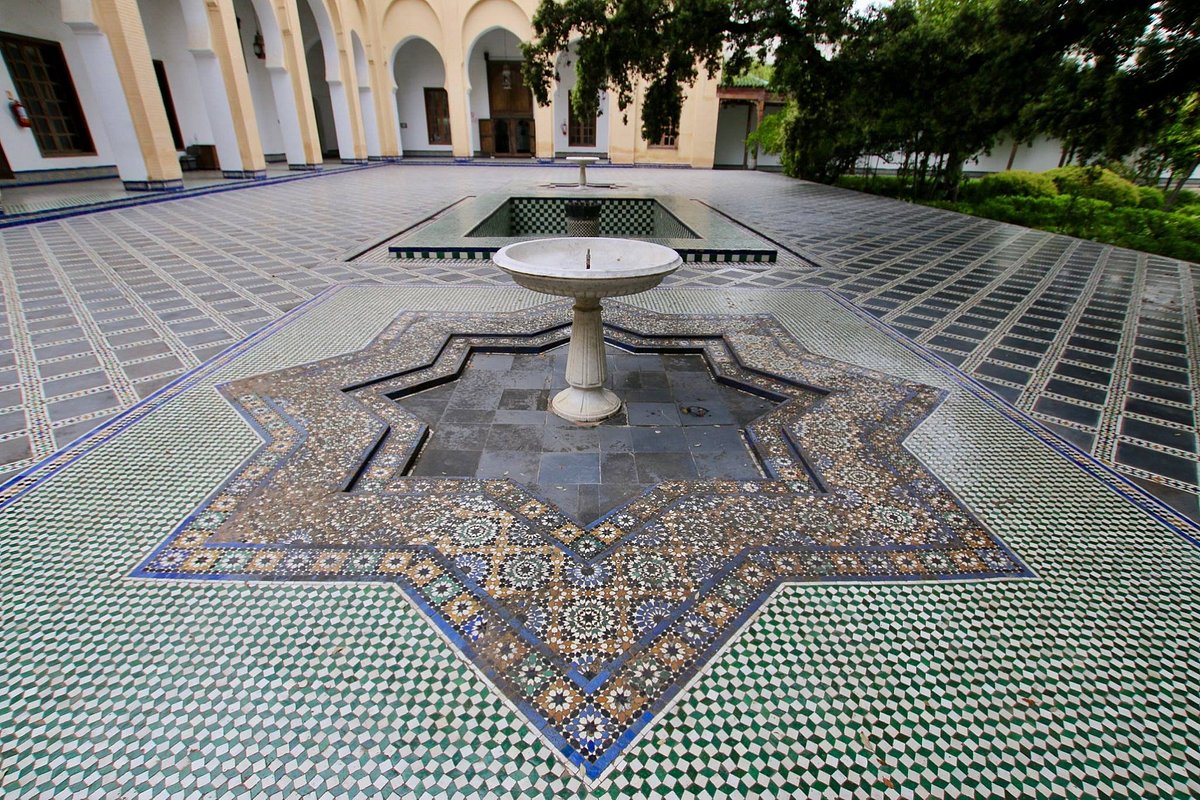The Al Batha Museum of Islamic Arts, one of Morocco’s oldest museums, has reopened after a three-year restoration, offering visitors a glimpse into the country’s rich artistic and cultural heritage.
Originally built as a palace between 1873 and 1894 by Sultan Moulay Hassan I, the building later served as a summer residence for official receptions. Sultan Moulay Abdelaziz redecorated and expanded it in 1897. The palace was converted into a museum in 1915, hosting the first permanent exhibition on the popular arts and traditions of Fez and its surrounding regions.
Following its restoration, the museum has been renamed to emphasize its focus on Islamic arts. “Given its strategic location in Fez, one of the oldest Islamic cities still preserving its cultural heritage, we decided to rebrand it to highlight Islamic arts,” said curator Alae Fechtali.
The museum’s courtyard features a series of arches and rooms displaying a diverse collection of artifacts, including 19th-century wool carpets, traditional musical instruments, and kaftans embroidered with gold and silver thread. Among the exhibits is an embroidered cover from the tomb of Moulay Idriss Zerhoun, crafted from leather and silver thread during the Alaouite dynasty.
A 14th-century Marinid-era zellij tiled wall showcases intricate decorative styles, while the museum’s rare Qur’an collection, dating from the Almohad and Marinid periods, attracts particular interest from visitors. Also on display is a set of planetary astrolabes, with the oldest dating back to 1217. These instruments were historically used for navigation, astronomy, and determining the direction of Mecca for prayer.
One of the museum’s most prized exhibits is a hydraulic clock featuring 13 bronze gongs, originally part of the 14th-century Bu’inaniya Madrasa in Fez. Of the original pieces, only eight remain on display.
“When visitors come, they discover the heritage left behind by their ancestors, which inspires them to create new works based on ancient objects,” said assistant curator Fatima Zahra. “The museum also plays a fundamental role in education and scientific research.”
Other notable pieces include the 10th-century minbar (pulpit) from the Al Andalus Mosque and the intricately carved Bab Al-Sbitriyin door, transferred from Al-Qarawiyyin Mosque. “We displayed artifacts from various archaeological sites, such as Thamusida, Volubilis, and Chellah, as well as pieces from dynasties that ruled Morocco during the Islamic period,” Fechtali added.
The restoration, which aimed to preserve the museum’s architectural authenticity while modernizing its facilities, relied on expert craftsmen and traditional building materials. “It was necessary to preserve the authenticity of the museum while adapting it to the latest updates,” Fechtali said. “We restored this museum over three years with the expertise of traditional artisans.”
The museum now houses 777 artifacts spanning multiple centuries. Visitors have praised the experience, particularly during Ramadan, when the atmosphere aligns with the spirituality of the holy month.
“This month has a deep spiritual significance for Moroccans, and it’s an opportunity for foreigners to experience this atmosphere with us,” Zahra said.
For visitors like Katia Wassaos from the Netherlands, the museum offers a deeper appreciation of Morocco’s cultural diversity. “It’s wonderful to see all the history here, the richness of it,” she said. “Morocco, for me, is a country where you can see so many influences everywhere.”

